Plant Cell Culture —— Essential Methods
----- 植物细胞培养方法导论
Preface. Contributors. 1 Plant Micropropagation (Ivan Iliev, AlenaGajdosova, Gabriela Libiakova, Shri Mohan Jain). 1.1 Introduction. 1.2 Methods and approaches. 1.2.1 Explants and their surface disinfection. 1.2.2 Culture media and their preparation. 1.2.3 Stages of micropropagation. 1.2.4 Techniques of micropropagation. 1.3 Troubleshooting. References. 2 Thin Cell Layers: The Technique (Jaime A.Teixeira da Silva and Michio Tanaka). 2.1 Introduction. 2.2 Methods and approaches. 2.2.1 TCL. 2.2.2 Choice of material: Cymbidium hybrid. 2.3 Troubleshooting. 2.3.1 General comments. References. 3 Plant Regeneration SomaticEmbryogenesis (Kim E. Nolan, Ray J. Rose). 3.1 Introduction. 3.2 Methods and approaches. 3.2.1 Selection of the cultivar and type of explant. 3.2.2 Culture media. 3.2.3 Preparation of culture media. 3.2.4 Sterilization of tissues and sterile technique. 3.2.5 Culture and growth of tissue. 3.2.6 Culture and induction of somatic embryos. 3.2.7 Embryo development. 3.2.8 Transfer to soil the final stage ofregeneration. 3.3 Troubleshooting. References. 4 Haploid Plants (Sant S. Bhojwani and Prem K.Dantu). 4.1 Introduction. 4.2 Methods and approaches. 4.2.1 Androgenesis. 4.2.2 Diploidization. 4.3 Troubleshooting. References. 5 Embryo Rescue (Traud Winkelmann, Antje Doil,Sandra Reinhardt and Aloma Ewald). 5.1 Introduction. 5.2 Methods and approaches. 5.2.1 Identification of the time and type of barrier inhybridization. 5.2.2 Isolation of plant material after fertilization. 5.2.3 Culture conditions and media. 5.2.4 Confirmation of hybridity and ploidy. 5.2.5 Conditions for regeneration of embryos to plants. 5.3 Troubleshooting. References. 6 In vitro Flowering and Seed Set:Acceleration of Generation Cycles (Sergio J. Ochatt andRajbir S. Sangwan). 6.1 Introduction. 6.2 Methods and approaches. 6.2.1 Protein legumes [7]. 6.2.2 Arabidopsis thaliana [13]. 6.3 Troubleshooting. References. 7 Induced Mutagenesis in Plants Using Physical and ChemicalAgents (Chikelu Mba, Rownak Afza, Souleymane Bado andShri Mohan Jain). 7.1 Introduction. 7.2 Methods and approaches. 7.2.1 Determination of the optimal doses of mutagens forinducing mutations. 7.3 Troubleshooting. 7.3.1 Factors influencing the outcome of mutagenesis usingchemical mutagens. 7.3.2 Factors influencing the outcome of mutagenesis usingphysical mutagens. 7.3.3 Facts about induced mutations. References. 8 Cryopreservation of Plant Germplasm (E.R.Joachim Keller and Angelika Senula). 8.1 Introduction. 8.2 Methods and approaches. 8.2.1 Main principles. 8.2.2 Slow (two-step) freezing. 8.2.3 Vitrification. 8.2.4 Encapsulation dehydration. 8.2.5 DMSO droplet freezing. 8.2.6 Combined methods. 8.2.7 Freezing of cold-hardened buds. 8.2.8 Freezing of orthodox seeds. 8.2.9 Freezing of pollen and spores. 8.3 Troubleshooting. References. 9 Plant Protoplasts: Isolation, Culture and PlantRegeneration (Michael R. Davey, Paul Anthony, DevalPatel and J. Brian Power). 9.1 Introduction. 9.2 Methods and approaches. 9.2.1 Protoplast isolation. 9.2.2 Protoplast culture. 9.3 Troubleshooting. References. 10 Protoplast Fusion Technology Somatic Hybridizationand Cybridization (Jude W. Grosser, Milica Calovic andEliezer S. Louzada). 10.1 Introduction. 10.2 General applications of somatic hybridization. 10.3 Methods and approaches. 10.4 Troubleshooting. References. 11 Genetic Transformation Agrobacterium (Ian S. Curtis). 11.1 Introduction. 11.2 Methods and approaches. 11.2.1 Agrobacterium as a natural genetic engineer. 11.2.2 Vector systems for transformation. 11.2.3 Inoculation procedures. 11.3 Troubleshooting. References. 12 Genetic Transformation Biolistics (Fredy Altpeter and SukhpreetSandhu). 12.1 Introduction. 12.2 Methods and approaches. 12.2.1 Biolistic technology. 12.2.2 Optimization of gene delivery parameters. 12.2.3 Target tissues. 12.2.4 Reporter gene assays. 12.2.5 Selection and plant regeneration. 12.3 Troubleshooting. References. 13 Plastid Transformation (Bridget V. Hogg, CiliaL.C. Lelivelt, Aisling Dunne, Kim-Hong Nguyen and Jacqueline M.Nugent). 13.1 Introduction. 13.2 Methods and approaches. 13.2.1 Principles of plastid transformation. 13.2.2 Biolistic-mediated plastid transformation. 13.2.3 PEG-mediated plastid transformation. 13.2.4 Identification and characterization of transplastomicplants. 13.3 Troubleshooting. 13.3.1 Biolistic-mediated transformation. 13.3.2 PEG-mediated transformation. References. 14 Molecular Characterization of Genetically ManipulatedPlants (Cristiano Lacorte, Giovanni Vianna, FranciscoJ.L. Aragao and El' bio L. Rech). 14.1 Introduction. 14.2 Methods and approaches. 14.2.1 Plant DNA extraction. 14.2.2 Polymerase chain reaction. 14.2.3 Southern blot technique. 14.2.4 Analysis of the integration site: inverse PCR (iPCR) andthermal asymmetric interlaced PCR (Tail-PCR). 14.3 Troubleshooting. References. 15 Bioreactors (Spiridon Kintzios). 15.1 Introduction. 15.2 Methods and approaches. 15.2.1 Medium scale disposable or semidisposable airliftreactors. 15.2.2 The RITA temporary immersion reactor. 15.2.3 The LifeReactor. 15.2.4 Immobilized cell bioreactors. 15.2.5 Mini-bioreactors. 15.3 Troubleshooting. References. 16 Secondary Products (Kexuan Tang, Lei Zhang,Junfeng Chen, Ying Xiao, Wansheng Chen and Xiaofen Sun). 16.1 Introduction. 16.2 Methods and approaches. 16.2.1 Plant cell cultures. 16.2.2 Scale-up and regulation of secondary metaboliteproduction. 16.2.3 Detection of secondary products. 16.3 Troubleshooting. References. 17 Plant Cell Culture Present andFuture (Jim M. Dunwell). 17.1 Introduction. 17.2 Micropropagation. 17.3 Embryogenesis. 17.3.1 Background. 17.3.2 Commercial exploitation of somatic embryos. 17.3.3 Molecular aspects of somatic embryogenesis. 17.3.4 Microspore derived embryos. 17.4 Haploid methodology. 17.4.1 Haploids and their exploitation. 17.4.2 Induction of haploid plants. 17.4.3 Molecular aspects of haploid induction frommicrospores. 17.4.4 Ab initio zygotic-like embryogenesis frommicrospores. 17.5 Somaclonal variation. 17.6 Transgenic methods. 17.6.1 Background. 17.6.2 Regeneration and transformation techniques. 17.6.3 Chloroplast transformation. 17.6.4 Biopharming. 17.7 Protoplasts and somatic hybridization. 17.8 Bioreactors. 17.8.1 Production of plant products. 17.8.2 Production of pharmaceuticals. 17.8.3 Production of food ingredients. 17.8.4 Production of cosmetics. 17.8.5 Analytical methodology. 17.9 Cryopreservation. 17.10 Intellectual property and commercialization. 17.10.1 Background. 17.10.2 Sources of patent and other relevant information. 17.11 Conclusion. References. Index.
{{comment.content}}
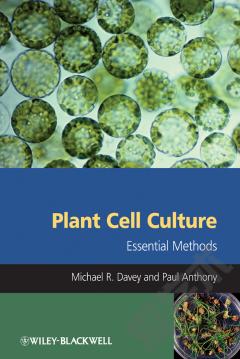
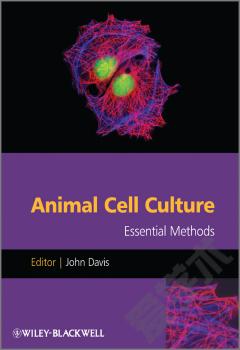

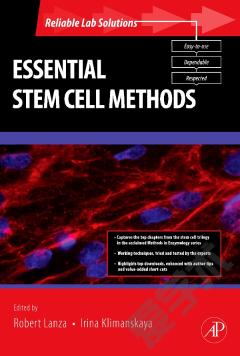

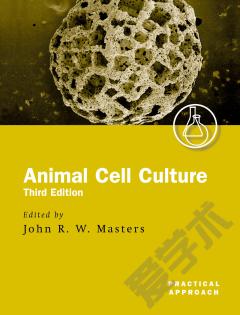
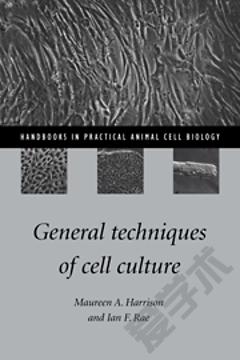

 京公网安备 11010802027623号
京公网安备 11010802027623号